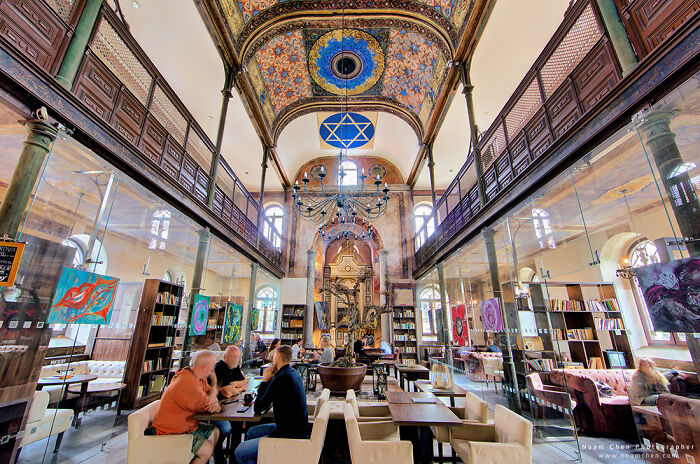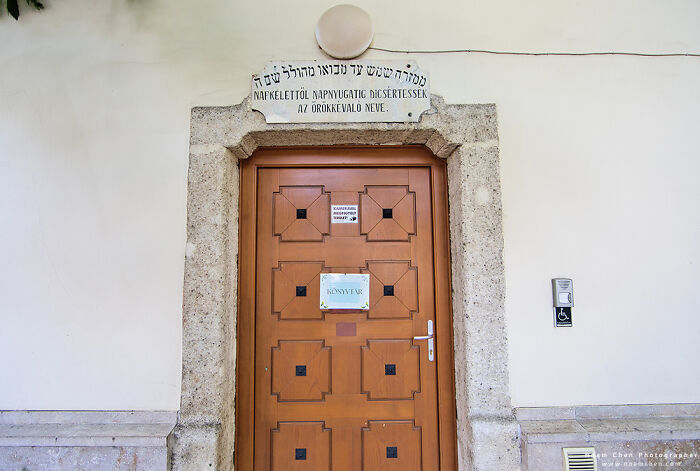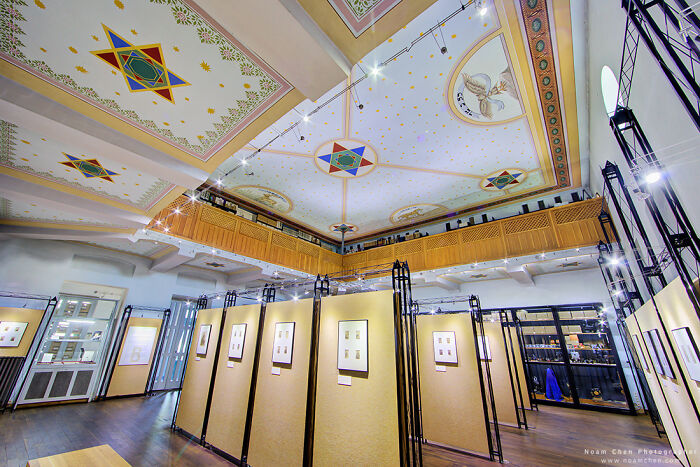“A synagogue is not just a building,” one of the Jews I met during my journey told me.
It is also far more than just a place of worship, as the dictionary might suggest.
For centuries, synagogues have been the heart of every Jewish community worldwide—the place where they gathered to celebrate life’s milestones. They have been centers of gratitude, joy, and connection between God and His people.
Ahead of the world marking 80 years since the end of World War II, I embarked on a journey through Eastern Europe, following the footsteps of historic synagogues that survived the devastation of WWII. I sought to uncover their current state and the fate of the Jewish communities they once served—80 years after the Holocaust.
What I discovered was astonishing. Many synagogues had been disturbingly repurposed and now serve as restaurants, bars, and even a supermarket that sells pork. These are some of the historic pre-war synagogues that survived but have been shockingly repurposed.
More info: Instagram | noamchen.com | Facebook | x.com
1. Trnava, Slovakia: Former 1892 Orthodox Synagogue, turned restaurant aptly named “Synagoga Cafe”

Over 80% of Trnava’s Jewish community lost their lives during the Holocaust, and no Jews live there today.

The exterior of the former synagogue was renovated and converted in 2010

2. Krakow, Poland: Former Synagogue “Hevra Tehillim,” now a bar/restaurant called HEVRE Bar

The 1896 Synagogue served Krakow’s Jewish community of 70,000. Only 140 live there today

Wall polychrome paintings, discovered in 2008, depict Biblical scenes and holy places in Jerusalem

3. Inowłódz, Poland: The historic 1820 Synagogue now functions as a Supermarket

Original painted prayers on the walls of the former synagogue above toilet paper

The former prayer hall still features Menorah-shaped chandeliers

A supermarket that sells Pork, a meat forbidden in Judaism.

I had mixed emotions while visiting these repurposed synagogues. For example, for me, as a Jew, it was heartbreaking to be inside a former synagogue where people used to pray and see how it turned into a place that sells toilet paper and pork. It felt much more respectful and appropriate for me when I visited other former synagogues that, although are no longer used for religious purposes, they turned into Jewish history museums or Holocaust memorial centers. But also when I visited former synagogues that are now cafes and restaurants, but at least they made sure to keep the original features of the synagogue out of respect for its past, it was somewhat comforting, too.
4. Tarnów, Poland: a 1904 Mikveh (Jewish ritual bathhouse), once a sacred space for purification, now serves as a nightclub

5. Budapest, Hungary: Dózsa György Street Synagogue, once the third-largest synagogue in Budapest

The 1909 synagogue was converted into a sports center and today houses a fencing club.

Traces of its Jewish past are still visible – the beautifully decorated interior of the former women’s gallery

6. Budapest, Hungary: The 1912 Kőbánya Synagogue was converted into a Church in 1991

A Cross next to the original Star of David windows

Original Hebrew inscription and the Ten Commandments tablet can still be seen inside

7. Košice, Slovakia: The 1899 Old Orthodox Synagogue, now a cultural center

The breathtaking and largely unrestored interior of the former synagogue

Once home to over 11,000 Jews before the Holocaust, only as few as 240 live in Košice today.

The Synagogue’s second floor, once the women’s gallery

The outstanding colorful wall decorations of the Old Orthodox Synagogue

These transformations, when done out of respect for the past, can, in fact, help preserve the memory. Because in many of these towns, there are no Jewish communities anymore, and these synagogues may be the only testament to the lives of so many people who lived there. But for example, I visited a former synagogue in Kosice that is now a concert hall and has no indication whatsoever of its past – and that is how you dangerously erase the memory of what had happened.
I think in places where there are no longer Jewish communities to restore the synagogues for, the most appropriate thing to do is to turn them into a place of memory, a place that will honor and memorialize the lives of those who lived there while educating about the atrocities of the Holocaust where 6 million Jews lost their lives, so such things will never happen again.
8. Kecskemét, Hungary: The Great Neolog Synagogue, now the House of Science and Technology

Inside the 1871 former synagogue is a display of sculptures, which is considered idolatry in Judaism

9. Zalaegerszeg, Hungary: The 1904 Grand Synagogue was repurposed into a concert hall in 1983

With the city’s entire Jewish population deported to Auschwitz after the war, the synagogue remained unused for decades.

The interior of the former synagogue today

“Your past is my present,” a portrait of a former Jewish family reflected in a haunting memorial on the second floor

10. Budapest, Hungary: The 19th-century Nagytétény Synagogue transformed into a Public Library in 2013

A Public Library with a Torah Ark, the former synagogue of Nagytétény

11. Surany, Slovakia: The 1916 Synagogue was converted into the Surany Municipal Museum in 2005

Inside the former synagogue. No Jews remain in Surany today

12. Kecskemét, Hungary: The 1917 Orthodox Synagogue now serves as the Museum of Photography

Despite its transformation, paintings on the ceiling were restored to respect its Jewish past

Remarkably, the space is still being used for religious purposes by the local Jewish community during major holidays.

Even though I covered over 40 historic pre-war synagogues in Eastern Europe, there are many others that I couldn’t reach but would love to visit in the future if I could.
As a third generation of a Holocaust survivor who made it through Auschwitz, I see an immense importance to keep the memory of what happened during the Holocaust alive for future generations. So as long as I can use my skills in photography to tell the stories of my people and our history, I hope I’ll get to work on more meaningful projects like this one.
 Follow Us
Follow Us





